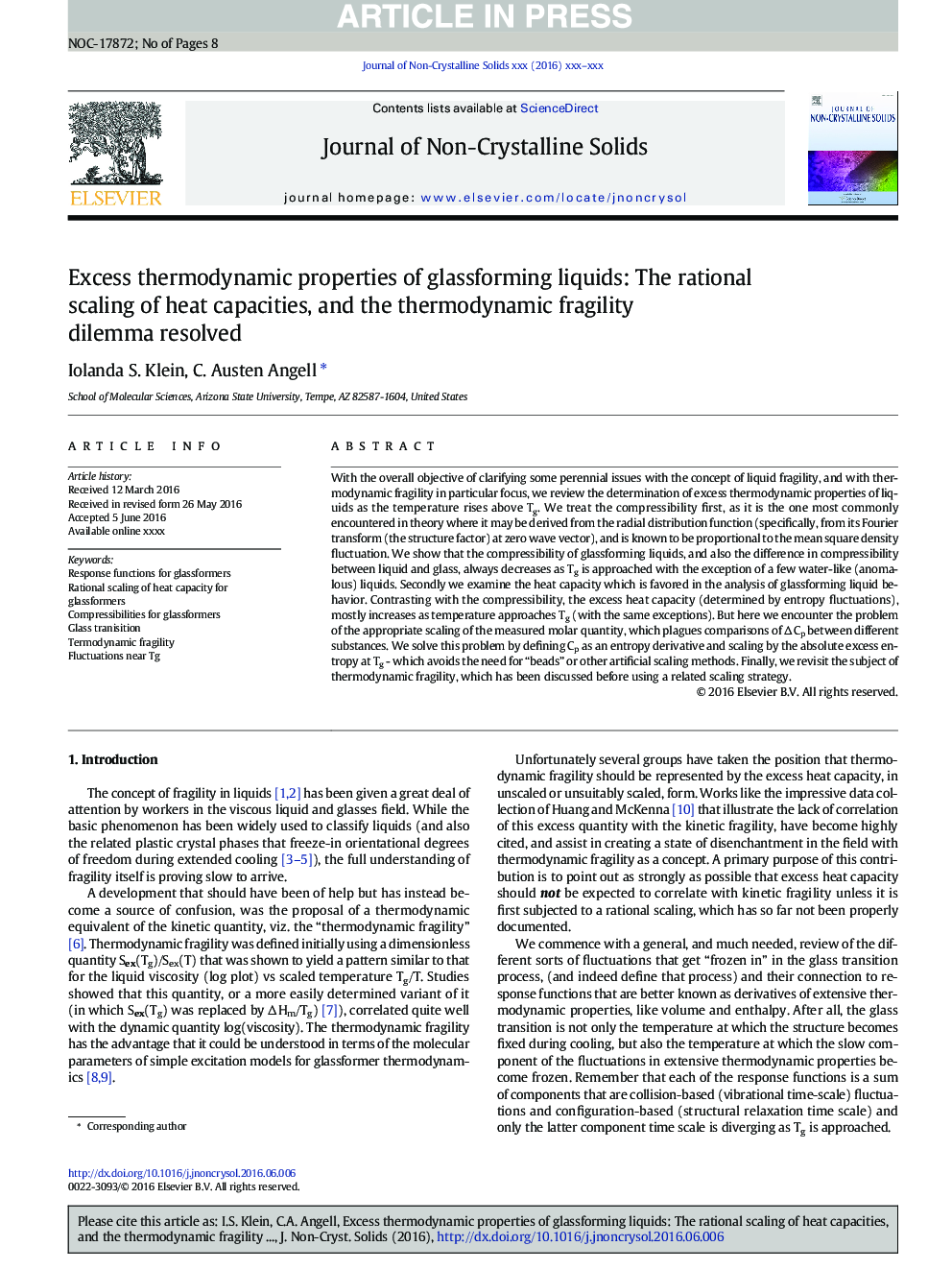| Article ID | Journal | Published Year | Pages | File Type |
|---|---|---|---|---|
| 5441469 | Journal of Non-Crystalline Solids | 2016 | 8 Pages |
Abstract
With the overall objective of clarifying some perennial issues with the concept of liquid fragility, and with thermodynamic fragility in particular focus, we review the determination of excess thermodynamic properties of liquids as the temperature rises above Tg. We treat the compressibility first, as it is the one most commonly encountered in theory where it may be derived from the radial distribution function (specifically, from its Fourier transform (the structure factor) at zero wave vector), and is known to be proportional to the mean square density fluctuation. We show that the compressibility of glassforming liquids, and also the difference in compressibility between liquid and glass, always decreases as Tg is approached with the exception of a few water-like (anomalous) liquids. Secondly we examine the heat capacity which is favored in the analysis of glassforming liquid behavior. Contrasting with the compressibility, the excess heat capacity (determined by entropy fluctuations), mostly increases as temperature approaches Tg (with the same exceptions). But here we encounter the problem of the appropriate scaling of the measured molar quantity, which plagues comparisons of â Cp between different substances. We solve this problem by defining Cp as an entropy derivative and scaling by the absolute excess entropy at Tg - which avoids the need for “beads” or other artificial scaling methods. Finally, we revisit the subject of thermodynamic fragility, which has been discussed before using a related scaling strategy.
Related Topics
Physical Sciences and Engineering
Materials Science
Ceramics and Composites
Authors
Iolanda S. Klein, C. Austen Angell,
